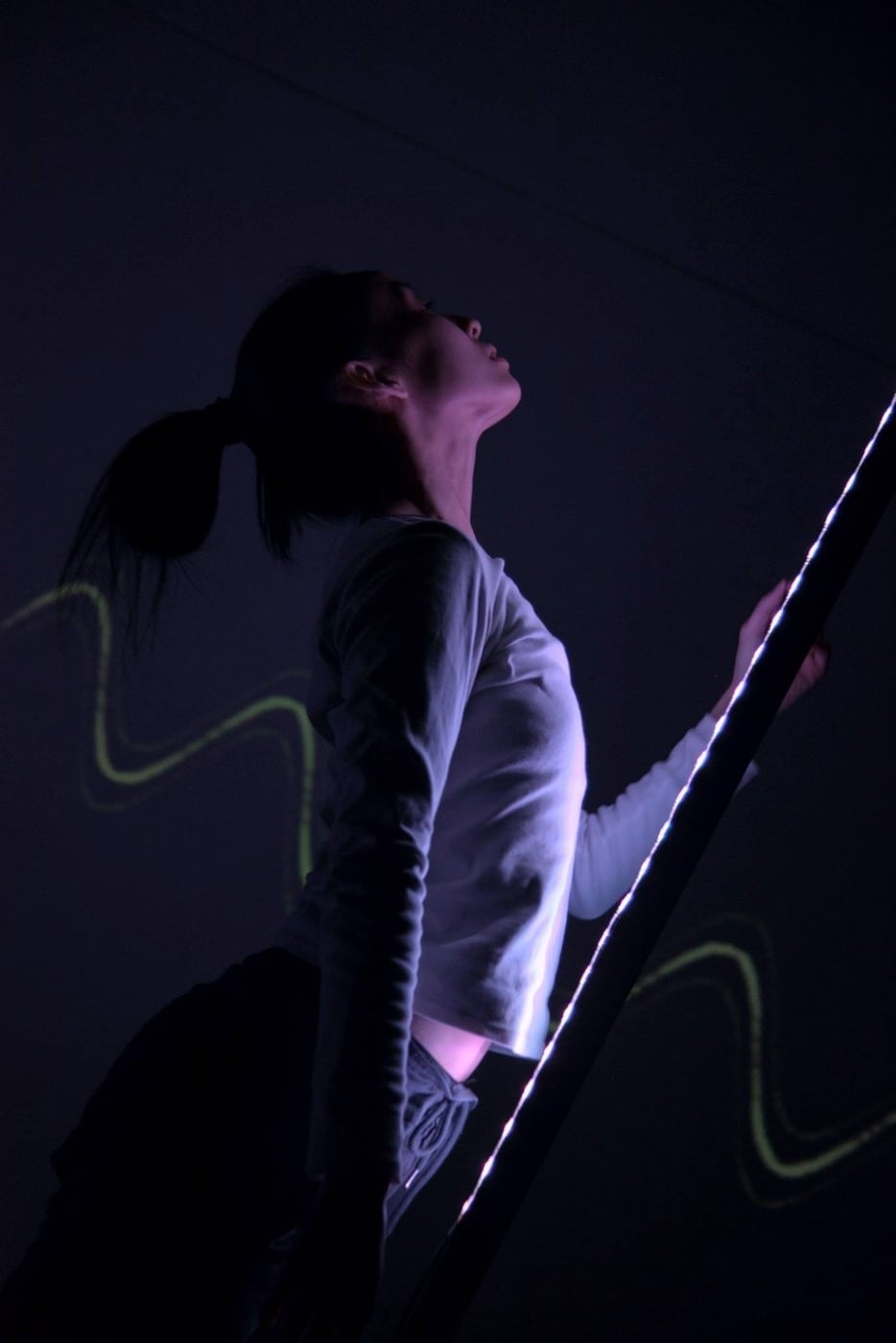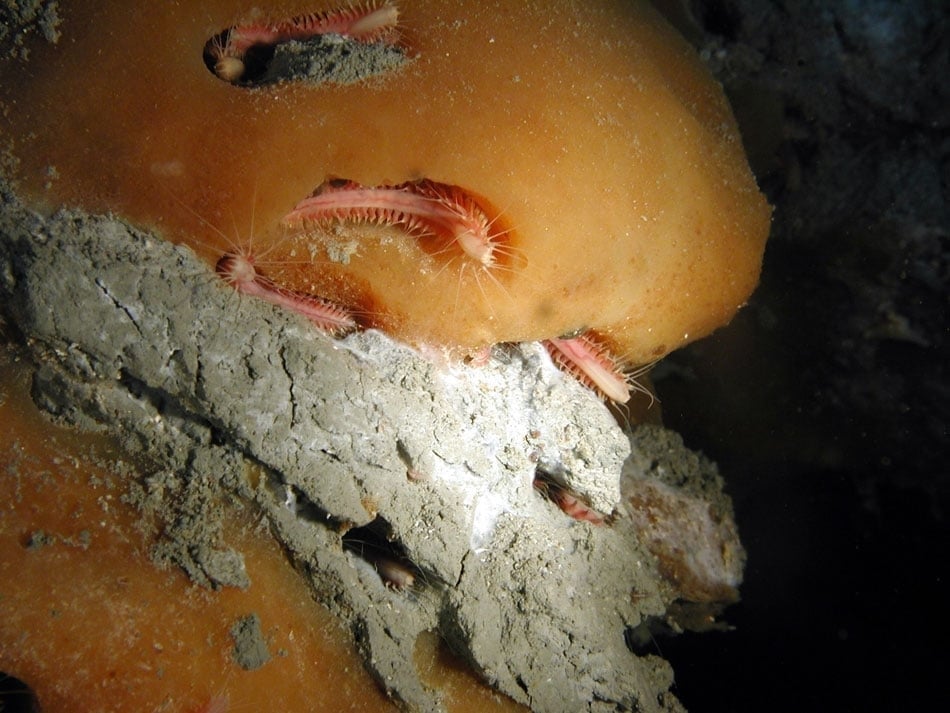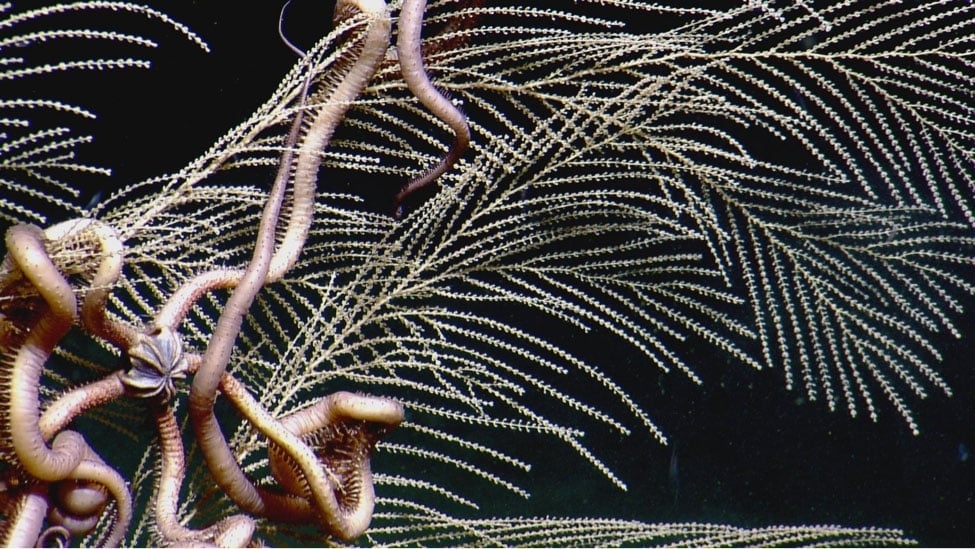Stepping down as curator of SLINGSHOT to join ECOGIG
SLINGSHOT, the new festival of Music, Electronic Arts and Technology, takes place each spring in Athens, Georgia.
The ECOGIG Research Consortium studies the impacts of oil spills and natural hydrocarbon seeps on deep ocean ecosystems in the Gulf of Mexico. ECOGIG (Ecosystem Impacts of Oil and Gas Inputs to the Gulf) is one of 8 groups funded by the Gulf of Mexico Research Initiative (GoMRI), an independent research board created to allocate $500M committed by BP for independent research following the 2010 Macondo well blowout. The blowout, explosion and sinking of the Deepwater Horizon platform killed 11 rig workers and caused the largest accidental marine oil spill in history.
It’s after a not a small amount of reflection that I’ve decided to step down as Curator of the SLINGSHOT Festival of Music, Electronic Arts and Technology, in order to focus on data visualization research with ECOGIG, a research consortium studying the impact of the 2010 Deepwater Horizon oil spill in the Gulf of Mexico.
In 2012, Kai Riedl approached me with an idea for a new festival in Athens, Georgia to promote forward thinking music and art. The festival would be called Slingshot. Together, and with support from the Athens community and the University of Georgia (UGA), we put together the first SLINGSHOT Festival of Music, Electronic Arts and Technology in March 2013. Edition 1 of SLINGSHOT featured national and local pop music alongside some of the best international sound art and visual art, all with a focus on technology. SLINGSHOT’s major innovation was to create a continuum across popular, experimental, and serious art forms.
 PSquare Media Lab (Taiwan): "Resonate 2" @ Slingshot 2015
PSquare Media Lab (Taiwan): "Resonate 2" @ Slingshot 2015
Over the next 2 years, we grew SLINGSHOT into a fully fledged festival and conference with an international profile; one which has begun to have a positive impact on education and economic development in our community as it celebrates creativity. As curator, I built the Art and Tech sections of the festival, with participation of the Georgia Museum of Art, Lamar Dodd School of Art, UGA’s College of Engineering, and support from the Willson Center for Humanities and Arts and the Office of the Vice President for Research. SLINGSHOT II and III featured high profile international sound artists, electronic music composers and visual artists, tech talks and demonstrations on arts technology, culminating in 2015 with the Sensory Overload conference, featuring top researchers in big data, data visualization and data sonification. In 2015 we also launched our educational outreach initiative, GIZMO, which offers unique instruction in music, art and technology to kids in Athens.
The path to Marine Sciences
 Iceworms (Hesiocaeca methanicola) occupying burrows on exposed gas hydrate (i.e. "methane ice") at the bottom of the Gulf of Mexico. Crude oil embedded in the hydrate colors it orange. (Photo credit Ian R. MacDonald, ECOGIG)
Iceworms (Hesiocaeca methanicola) occupying burrows on exposed gas hydrate (i.e. "methane ice") at the bottom of the Gulf of Mexico. Crude oil embedded in the hydrate colors it orange. (Photo credit Ian R. MacDonald, ECOGIG)
As many reading this know, I am a composer and sound artist. Marine Sciences may seem an unlikely move. My training was in composition and computer music, initially at the University of Montreal and McGill University, then at CNMAT (the Center for New Music and Audio Technologies) at the University of California, Berkeley. Since 2004, I’ve been teaching sound art, interactive art and graphic design at the University of Georgia.
 Close-up of a brittle star clinging to a deepwater Callogorgia octocoral in the Gulf of Mexico. (credit: Ocean Exploration Trust and ECOGIG
Close-up of a brittle star clinging to a deepwater Callogorgia octocoral in the Gulf of Mexico. (credit: Ocean Exploration Trust and ECOGIG
What most probably don’t know is that I once considered studying oceanography, having grown up in San Francisco with a deep attachment to the water. And working at the Exploratorium as a high school student in the 1980′s gave me the bug for science, which I’ve carried with me through all my artistic endeavors ever since. For the past few years, I have been working in “data perceptualization,” that is, multi-sensory data representation combining mainly visualization and sonification. I put together a faculty research cluster on the topic, bringing together designers and scientists to work on real problems involving data representation and communication.
When Samantha Joye, director of ECOGIG, offered me the opportunity to join the team as a data visualization researcher, I saw a unique chance to combine my interests and redirect my expertise and creativity towards a greater good.
We in the arts are often conflicted over our contribution to society. We have the arguably selfish luxury of making a living through pure, purposeless expression. I have always been one of those who have argued that art is a fundamental and necessary component of a functioning society, and has intrinsic value to humanity. Nevertheless, we who share that belief are not immune to the desire to make a more tangible contribution. Art can make that tangible contribution through what it has to teach science about communication and even discovery. (That was my motivation in bringing together scientists and artists for the Sensory Overload conference.)
But now, I have the chance to make an even more direct contribution to science with ECOGIG. I am deeply grateful for that. Though I will miss working with Slingshot, I can’t easily express how excited I am to work with ECOGIG’s team of top marine scientists helping to shape the future of our oceans.
-Éric Marty | @allopole